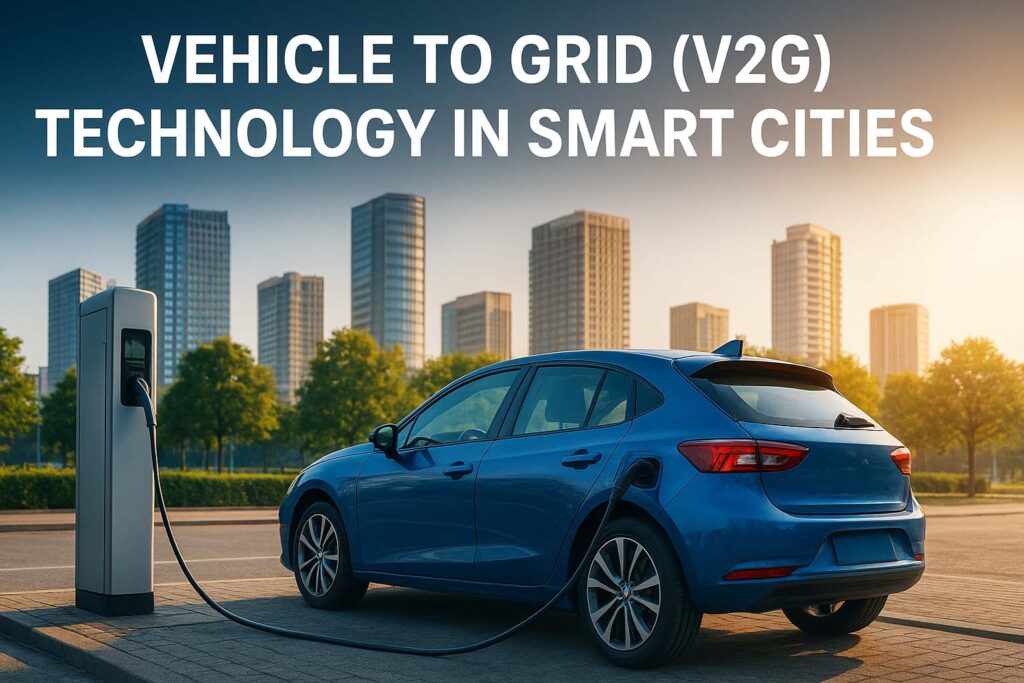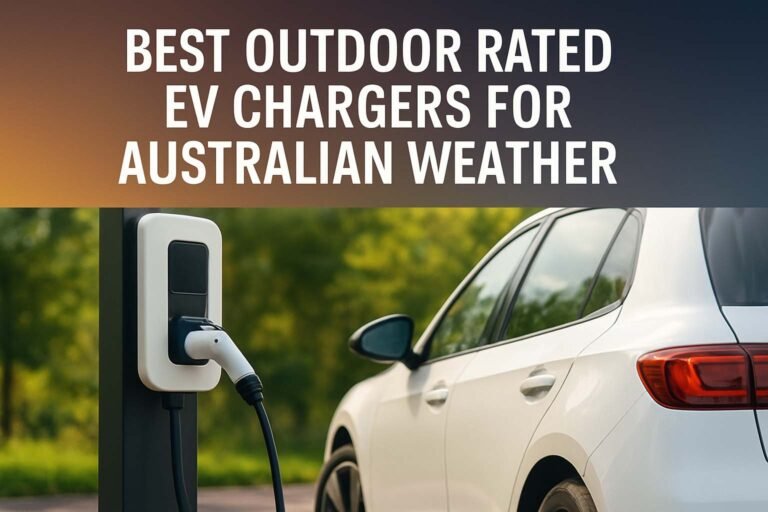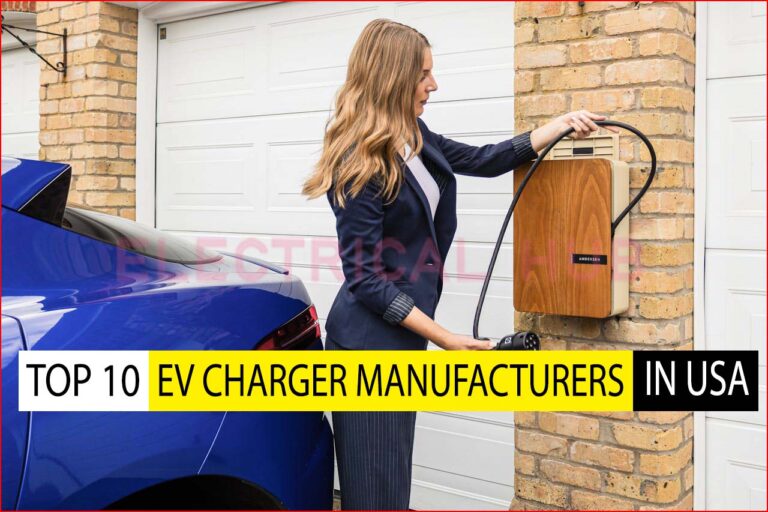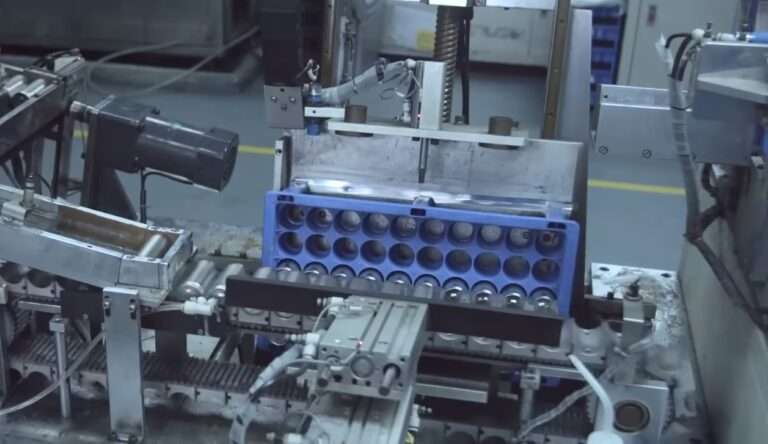Vehicle to Grid (V2G) Technology in Smart Cities
Smart cities are evolving rapidly. They rely on advanced technologies to manage energy, transport, and communication. Among these innovations, Vehicle to Grid (V2G) Technology stands out as a game-changer. It connects electric vehicles (EVs) to the power grid, enabling bidirectional energy flow. This means EVs are no longer just consumers of electricity. They can now store and supply energy back to the grid when needed.
Table of Contents
Table of Contents

The concept of V2G is gaining global attention. With rising EV adoption and renewable energy integration, energy demand patterns are shifting. Smart cities need reliable solutions to balance supply and demand. V2G offers that solution. It ensures energy flexibility, supports renewable integration, and reduces grid stress.
This article explores the working, benefits, challenges, and future of Vehicle to Grid (V2G) Technology in smart cities. We will look at technical details, applications, and strategies to implement it successfully.
Key Takeaways
- Vehicle to Grid (V2G) Technology enables EVs to supply electricity back to the power grid.
- It improves energy efficiency, supports renewable energy, and stabilizes the grid.
- V2G is crucial for smart cities aiming for sustainability and energy independence.
Use our online tool for free Single Phase vs Three Phase EV Charger Load Calculator
What is Vehicle to Grid (V2G) Technology?
Vehicle to Grid (V2G) Technology refers to a system where electric vehicles communicate with the grid to provide stored energy during peak demand. This process is bidirectional. When demand is low, EVs charge from the grid. When demand spikes, EVs can discharge electricity back to the grid.
This approach transforms electric vehicles into mobile energy storage units. Imagine thousands of EVs in a city acting as distributed batteries. They can help stabilize voltage, frequency, and energy reserves.
Core Components of V2G System:
- Electric Vehicles (EVs): Act as energy storage units.
- Bidirectional Chargers: Enable energy flow in both directions.
- Smart Grid Infrastructure: Ensures communication between EVs and grid.
- Control Software: Manages charging and discharging schedules.
How Does Vehicle to Grid (V2G) Technology Work?
The working of V2G is based on controlled energy exchange. EV owners plug in their vehicles using V2G-enabled chargers. These chargers communicate with the grid operator via a secure protocol. When there is excess renewable energy, the system charges the EV battery. When demand peaks, the system discharges electricity back to the grid.
The communication is usually managed by an aggregator. The aggregator groups multiple EVs and acts as a single entity for the grid. This makes the process efficient and scalable.
Technical Steps:
- Connection: EV connects to the grid using a bidirectional charger.
- Monitoring: The system tracks battery state-of-charge (SOC) and grid demand.
- Energy Flow: Based on signals, EV either charges or discharges energy.
- Settlement: Owners receive compensation for energy supplied.
Know more about How to Calculate Load for Multiple EV Chargers in Apartment Buildings
Why is V2G Important for Smart Cities?
Smart cities face unique energy challenges. They integrate renewable sources like solar and wind, which are intermittent. This creates grid instability during fluctuations. V2G offers a solution by providing distributed energy storage.
Benefits for smart cities include:
- Grid Stability: Balances load during peak and off-peak times.
- Renewable Support: Stores excess solar or wind energy in EV batteries.
- Emergency Backup: Supplies power during outages.
- Cost Savings: Reduces the need for expensive grid infrastructure upgrades.
Technical Insights of Vehicle to Grid (V2G) Technology
Understanding V2G requires a look at the technical details. The main technologies involved include bidirectional power converters, communication protocols, and demand response algorithms.
Bidirectional Charger Specifications:
| Parameter | Typical Value |
|---|---|
| Power Rating | 3.7 kW to 22 kW |
| Efficiency | 90% to 95% |
| Communication | OCPP, ISO 15118 |
| Grid Compatibility | AC or DC coupling |
Know more about EV Charger Installation Cost UK
Communication Standards:
- ISO 15118: Defines EV and charger communication.
- OCPP (Open Charge Point Protocol): Manages charging stations.
The algorithms optimize charging and discharging based on:
- Electricity price signals.
- Grid demand forecasts.
- Battery health parameters.
Know more about IEC Standard for Battery Energy Storage System
Applications of V2G in Smart Cities
Vehicle to Grid (V2G) Technology serves multiple roles:
- Frequency Regulation: EVs inject or absorb small amounts of energy to maintain grid frequency.
- Peak Shaving: Supplies energy during high demand to reduce grid stress.
- Renewable Integration: Stores excess renewable power for later use.
- Emergency Power Supply: EVs can power homes or critical facilities during outages.
- Microgrids: Supports localized grids with flexible energy storage.
Economic Impact of Vehicle to Grid (V2G) Technology
V2G is not just about technology; it is also about economics. EV owners can earn money by participating in V2G programs. Utilities save on grid expansion costs. Cities reduce reliance on fossil fuels.
Cost-Benefit Table for Stakeholders:
| Stakeholder | Benefits |
|---|---|
| EV Owner | Earn revenue, lower charging costs |
| Utility Companies | Avoid infrastructure upgrades |
| City Authorities | Achieve sustainability targets |
According to recent studies, V2G could reduce annual energy costs for smart cities by up to 10%.
Challenges in Implementing Vehicle to Grid (V2G) Technology
Despite its potential, V2G faces several challenges:
- Battery Degradation: Frequent charging cycles can reduce battery life.
- High Infrastructure Cost: Requires advanced chargers and communication systems.
- Regulatory Barriers: Energy markets need policies for bidirectional flow.
- User Participation: EV owners must be willing to share their battery capacity.
Solutions include better battery technology, financial incentives, and clear regulations.
Know more about 7kW EV Charger Cost: A Detailed Guide
Future of V2G in Smart Cities
The future looks promising. With rapid EV adoption, the energy storage capacity on wheels is massive. Smart cities can leverage this to create resilient, low-carbon energy systems.
Key trends shaping the future:
- Integration with AI-based demand forecasting.
- Dynamic pricing for energy exchange.
- Stronger partnerships between automakers, utilities, and governments.
- Expansion of V2G into residential and commercial sectors.
Experts predict that by 2035, millions of EVs will participate in V2G networks worldwide. This will transform urban energy management.
Conclusion
Vehicle to Grid (V2G) Technology is more than an innovation. It is a necessity for smart cities aiming for energy efficiency and sustainability. By turning EVs into mobile energy resources, cities can balance grids, support renewables, and reduce costs. While challenges exist, the benefits far outweigh them.
Know more about Portable EV Charger Level 2
Smart cities of the future will not only have connected cars but connected energy systems. V2G is the bridge that makes this possible.
What vehicles support V2G?
Currently, Nissan Leaf, Mitsubishi Outlander PHEV, and some Hyundai/Kia EVs support V2G through CHAdeMO or ISO 15118 bidirectional charging standards.
What are the downsides of V2G?
Drawbacks include faster battery degradation, higher initial costs for compatible chargers, and limited availability of supporting vehicles and infrastructure.
Is Tesla capable of V2G?
No, Tesla vehicles do not currently support V2G; however, future models may enable bidirectional charging according to Tesla’s announcements.
Does V2G reduce battery life?
Yes, frequent charge-discharge cycles in V2G can accelerate battery wear, though smart energy management can minimize the impact.
Which cars can I use to power my house?
Models like Nissan Leaf, Ford F-150 Lightning, and Hyundai Ioniq 5 can power a home with proper bidirectional chargers.
Which chargers support V2G?
Specialized bidirectional chargers like Wallbox Quasar and Fermata Energy systems support V2G functionality.
Is V2G the future?
Yes, V2G is considered a key technology for energy grid stability and renewable integration, though widespread adoption depends on infrastructure and policy.
What is the difference between V2G and V2X?
V2G refers to vehicle-to-grid energy transfer, while V2X (Vehicle-to-Everything) includes V2H (home), V2L (load), and V2B (building) applications.
What are the disadvantages of bidirectional charging?
It adds cost, requires specialized chargers, and may void battery warranties if not supported by the manufacturer.
Can all EVs do bidirectional charging?
No, only specific models with bidirectional inverters and compatible standards (CHAdeMO or ISO 15118) support this feature.
Can I use my Tesla car to power my house?
Currently, Tesla cars cannot power a house, but Tesla Powerwall provides home backup instead.
Does Cybertruck support V2G?
Yes, Tesla announced Cybertruck will include bidirectional charging to power homes and appliances.
What drains an EV battery the most?
High-speed driving, aggressive acceleration, extreme temperatures, and using climate control consume the most energy.
Can V2L power a house?
Yes, V2L (Vehicle-to-Load) can power small household appliances but not an entire home continuously.
Can I leave my EV car plugged in all the time?
Yes, modern EVs manage charging automatically to prevent overcharging, making it safe to leave them plugged in.
Follow Us on Social:
Subscribe our Newsletter on Electrical Insights for latest updates from Electrical Engineering Hub
#VehicleToGrid, #V2GTechnology, #SmartCities, #ElectricVehicles, #EVCharging, #SustainableEnergy, #GreenTechnology, #EnergyStorage, #GridIntegration, #SmartGrid, #EVInfrastructure, #FutureOfEnergy, #CleanEnergy, #SmartMobility, #Decarbonization






